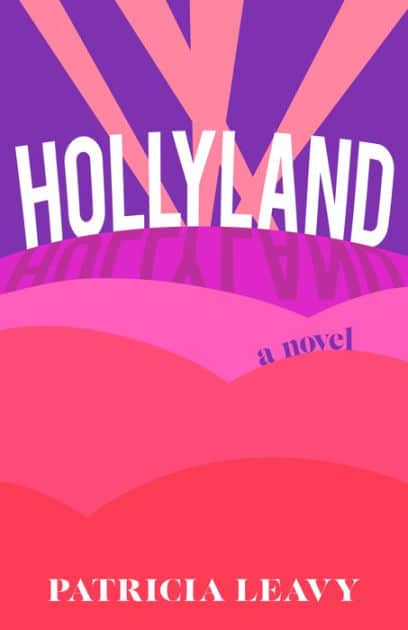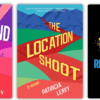Hollyland: Writing Fiction to Celebrate the Arts
In the following interview with award-winning author, Patricia Leavy, we discuss writing fiction and her new novel, Hollyland. We also address Patricia’s personal motivations for writing it, how she uses fiction to create a philosophy of the arts, our cultural obsession with celebrity, and navigating the filtered world of social media.
Marlen Harrison: Hollyland is a love story between arts researcher Dee Schwartz and famous actor Ryder Field, who descends from Hollywood royalty. It’s a light, romantic, and suspenseful beach-read. What inspired you to write it?
Patricia: I wrote it during the lockdown. My elderly father got covid. Luckily, today he is well. However, at the time it seemed like we might lose him and due to the pandemic, I couldn’t get to him. It was awful. So I wrote Hollyland as a love letter to my dad. While it’s entirely fictional, there are nods to my dad, his upbringing, and our relationship, many of which only he will recognize. Given how isolating things were at the time, and people were distancing, I wanted to write something that provided escape to somewhere joyful, filled with affection.
Marlen: Hollyland is also a celebration of the arts in our lives. Please tell us about the character of Dee and her passion for the arts.
Patricia Leavy: Dee has a pure love of art and has since childhood. I wondered what would happen if you took a character whose love for the arts is pure, and put her in Hollywood, surrounded by industry folks who make a living in entertainment. How might Dee help the others to see art anew? How might she help them to see Hollywood as Hollyland?
So, while on the surface the book is a fun celebrity romance, there’s a narrative about the arts woven into the story. It runs through the entire book, raising questions about the value we do or do not place on art. It looks at distinctions between art and entertainment and what the arts bring to our lives. The book also examines the role of art criticism in society and the role of the artist in society. I also touch on the nature of controversial art, the relationship between art and science, and the joy to be found experiencing or making art.
Marlen: You are an arts researcher, most well known in the academic world for your classic book Method Meets Art. Is Dee based on you? Did you tap into your research to write this novel?
Patricia: She’s definitely a fictional character from my imagination, with a different personality and life experiences, but we share certain things in common, including great passion for the arts. I drew on both my personal love for the arts and the decades of research I’ve done to write this novel.
Marlen: Some reviewers have called Hollyland the novel your nonfiction fans have been waiting for you to write because of the strong arts narrative. In looking at your body of work, all your novels include arts narratives to some extent. Protagonists are writers, artists, or publishers. You reference artistic works from films to songs to paintings. How do you see the relationship between writing fiction and nonfiction?
My novels can be read by anyone. They’re intended to be light, feel-good reads. That said, there’s another side to my novels. I’m also purposefully creating a narrative about the arts. Through my fiction catalog, I’m creating a philosophy of the arts. I choose to share it through literary writing.
Patricia: To me, they’re distinct in so far as my nonfiction books are intended for students, researchers, and practitioners. Anyone can read my novels. They are light, feel-good reads. That said, there’s another side to my novels. I’m also purposefully creating a narrative about the arts. Through my fiction catalog, I’m creating a philosophy of the arts. I choose to share it through literary writing.
Marlen: There’s a subtext in the book about celebrity, too. Dee is not enamored by fame, although she is surrounded by the famous. Her fresh perspective is eye-opening to the other characters. Can you talk about this?
Patricia: When I was growing up in the 1980s and 90s, we admires actors and models as part of our socialization. Drugstores and supermarkets had entire aisles devoted to selling magazines adorned with the faces of celebrities. Tweens and teens often wallpapered their rooms with torn out images of their favorite stars. College students plastered their dorm rooms.
Before the age of “realty TV” we knew very little about these celebrated elite. I guess it made it easy to assume they had better lives than we did. Their lives, at least as we imagined them, were aspirational. Unattainable. It’s easy to look back and see all the problems with this cultural phenomenon. The potential damage and self-destruction it could cause. Today, the landscape has changed, but our cultural obsession with celebrity and fame remains. All you have to do is look at how many followers various celebrities have on social media to see that we remain celebrity-obsessed in today’s Instagram culture.
Today though, it’s not just celebrities who have a public image. We all do. For all the good social media may do, there’s a dark side too. Today everyone airbrushes or filters their images. Everyone projects an image, an illusion, a brand. Everyone curates how the world sees them. It’s very much a world of “compare and despair.” In some ways, we’re all celebrities in the social media worlds we inhabit, sharing our life’s highlight reel.
I wrote Hollyland in part to break through that noise. Dee is an awesome person. She’s a successful scholar and artist, wildly in love with her movie star partner, and enmeshed in a great friend group. She’s likeable. Enviable. We can learn from her. She sees no distinction between “successful” artists and all the rest—she views the acts of making art, creating, and living with passion as acts of bravery. Dee questions why those lucky enough to make art and entertain are also given the biggest platforms. She suggests those who cure the ill, protect the innocent, and teach the young should be the most celebrated. And above all, she knows exactly who the real movie stars on the big screen of her life, and through her example, we can better see who the real stars are in our own lives.
Marlen: What are the messages you hope readers get from Hollyland?
Patricia: There’s love after grief. Always live with passion. Art matters. Magic may be right around the corner. Mostly, I hope the novel reminds people who the real movie stars are on the big screen of our lives. The big screen may be silver, but where’s the real gold dust?
Featured image of James Dean by Arthur Holucha for Pixabay





















